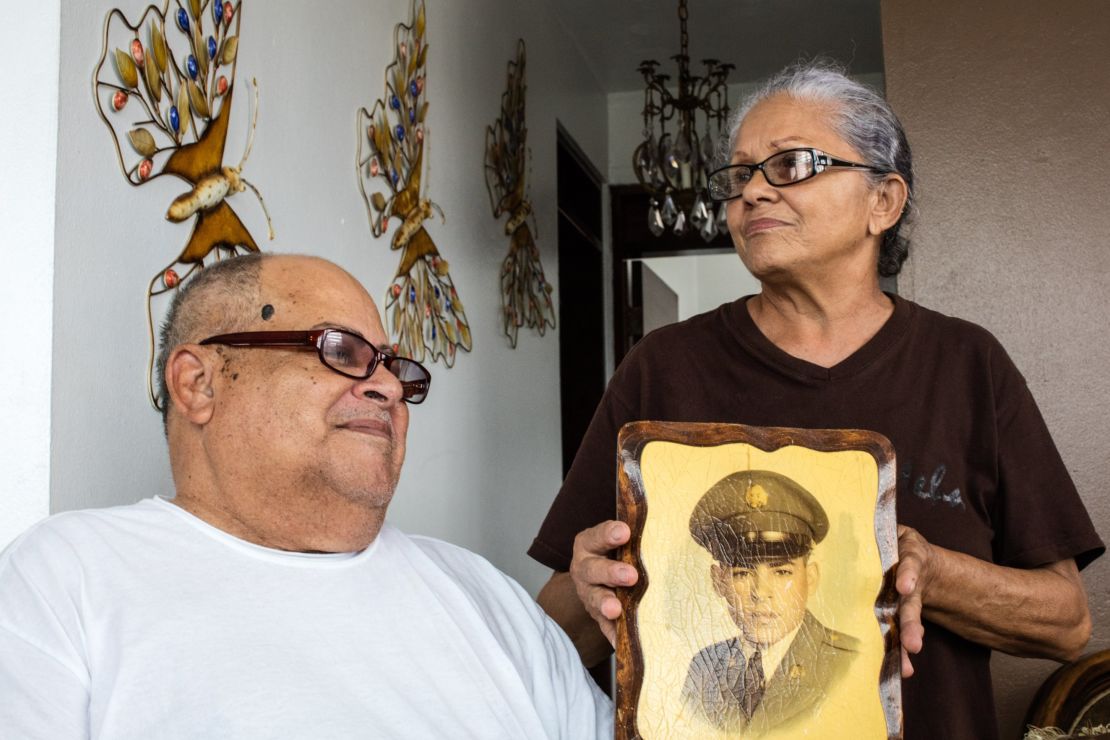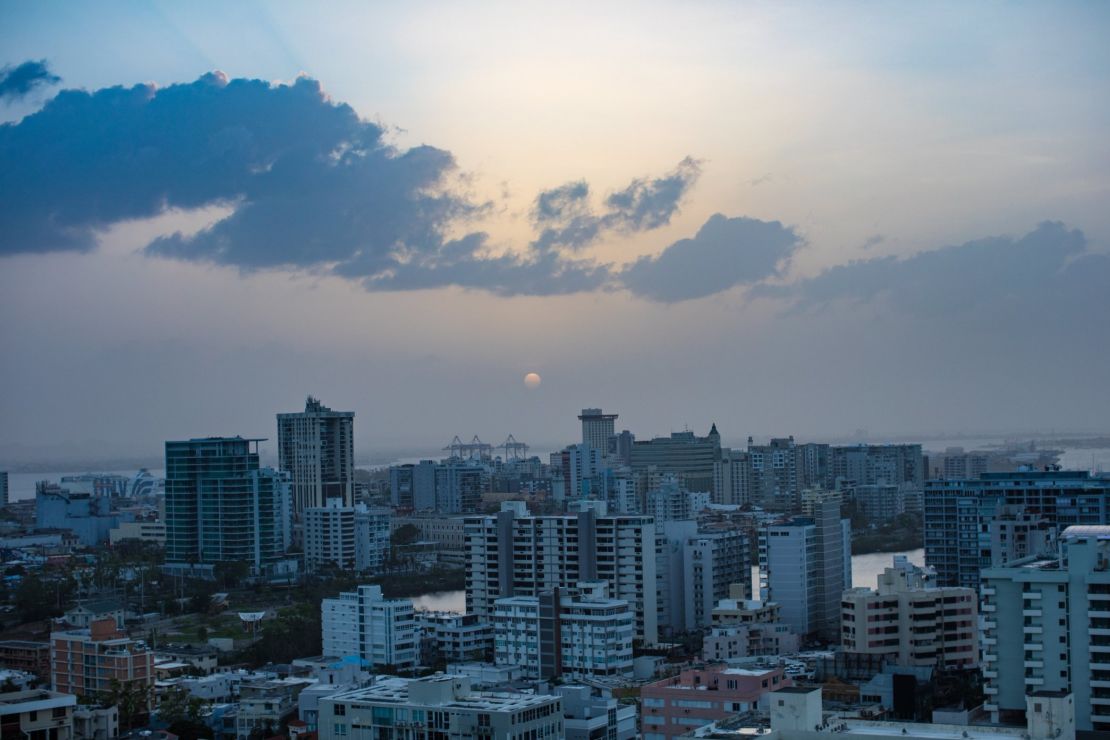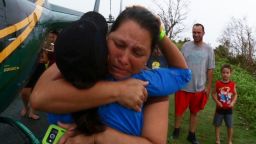Editor’s Note: This story contains some strong language.
“We need help.”
I’ve heard those three words repeated in the mountains of Puerto Rico, amid the wreckage of Big Pine Key and from the mayor who thinks his Texas town may die.
I’ve heard them spat in anger and mumbled in resignation and from California, you can hear them choked through smoke and fear in real time as 2017 explodes the ranks of America’s fastest growing demographic: Disaster survivor.

Nearly 5 million Americans have registered for federal aid since Labor Day; more victims than Hurricanes Katrina and Wilma and Superstorm Sandy combined.
But the man in charge of answering all those pleas is sounding his own cry for help. FEMA Administrator Brock Long, chosen by Donald Trump to be the nation’s top emergency manager, wants everyone to understand three fundamental truths:
- FEMA is broke.
- The system is broken.
- If this is the new normal, Americans can’t rely on a federal cavalry when disaster strikes. They will have to take care of themselves.
“I haven’t even been here for six months yet, and what I hope to do is inform Americans about how complex this mission is,” Long says. “I didn’t come up here to do status quo, I’m ready to change the face of emergency management.”

But out in the disaster zones, that’s a tough sell.
“If you could talk to the head of FEMA, what would you tell him?” I ask Samantha McCrary, one of the millions of summer of ’17 survivors and the creator of a homemade relief camp in Rockport, Texas.
“I’d tell him to pull his head out of his ass.”
Long winces when I play him the clip.

He has the look of a man who hasn’t slept much since hurricane and wildfire season began and his staff has worked such long hours, many have hit a congressionally mandated pay cap and must give back portions of their overtime pay.
But he agreed to meet me at FEMA headquarters in Washington to hear a recovery report card from folks I met while retracing the paths of Harvey, Irma and Maria.
Texas after Harvey
Most will remember Hurricane Harvey for the water. They remember all those boats on boulevards as Houston became a giant concrete bowl full of rain, but in the beloved tourist town where Harvey came ashore, they remember the wind.
The storm stalled over Rockport for 13 hours and months later, the proof of its strength is piled in the center of Highway 35, where semi-trucks haul the broken pieces of people’s lives.

One big truck holds 100 cubic yards of debris. By some estimates, this little town devoted to bird watching, art and the sea will fill 200,000 truckloads.

“Right here, on my right, is an example of one of our apartment buildings,” Mayor Charles Wax says as he drives past a demolished complex. “There is not a single apartment building operating in this entire city, so all of these people who were renting these apartments are all displaced. They are somewhere. We don’t know where, and we don’t know when and or if they will return.”
With all five of his main attractions damaged or blown away, Wax worries about an economic death spiral for Rockport. “We had over 1,300 businesses operating in the community. As of last week, we had 360 that reopened,” he tells me in late November.

On the outskirts of town, there’s proof the federal response can seem as fickle as the storm itself. After Harvey trashed their uninsured mobile home, Bo and Rene Carettini were delighted to receive a brand new, three-bedroom, three-bath modular home, but they admit it is much more than one couple needs.
“It wasn’t something that we had expected,” Rene says, walking through her new kitchen. “We have a travel trailer and figured we’ll stay in there. When they called about this, I was like, ‘But I didn’t sign up for it.” She says they offered to take something smaller, but FEMA insisted.

Meanwhile at Samantha McCrary’s pop-up relief camp, she points to a family with special needs children sleeping in their car while an expectant mother lives in a tent in her backyard.
“How does that make sense?” she says, after her colorful suggestion for Long and his head.

“I identify with Samantha’s frustrations. When you and your neighbors have lost everything you’ve worked for, it’s an incredibly tough situation,” Long says. “But you have to understand – we don’t have the houses. We don’t have tens of thousands of manufactured homes and travel trailers just stored somewhere ready to go.”
He explains how FEMA has to order, build, install and inspect each manufactured home at a cost of $200,000 to $300,000 before they go to a family for a temporary lease of 18 months. “And then when it’s done, I’m not allowed to reuse that trailer. I can’t refurbish it and reuse it. We have to dispose of it,” Long says and describes his desire to streamline the cumbersome inspection process while passing housing and reconstruction responsibilities down to states and counties.
But these are the kind of legislative fixes that could take years. In the meantime, a Kaiser Family Foundation survey of Texas storm survivors found that 45% aren’t getting the help they say they need and most of those believe it will never come.
Florida after Irma
“We’re not leaving until the shit hits the fan.”
Those were the live-on-CNN words of Peter Althuis, owner of Snappers Bar on Key Largo as Hurricane Irma set her sights on the Conch Republic.
I was there to do the typical pre-storm live shot; to marvel at the Old Salts and Never Leavers who thumb their nose at the swirling satellite map and mock the “premature evacuators.”
Since it was near closing time, I let the first expletive slide but then he dropped a second s-bomb, creating a viral moment.
Thirty-six hours later, the interview took on new meaning when Snappers was washed away.

But thanks to good insurance and loyal regulars willing to haul wreckage, he was open within days of the storm and now, surrounded by revelers under a tiki-hut reconstruction zone, he greets me in a T-shirt that reads “Snappers: We Give Two Shits.”
“It was a very positive energy right after the hurricane,” he says. “Everybody is helping each other out. And the government is not doing anything.”
He’s from Amsterdam, where a sense of unified civic duty keeps the waves at bay in a nation built below sea level.
“You should expect that government stands up and helps instead of getting in the way.”
Althuis was angry that county inspectors held up his tiki hut reconstruction, but he now sees a light at the end of the tunnel of red tape.
Compared to other disaster zones, the Upper Keys are blessed.
Brandon “Bam Bam” Jimenez, the fishing boat captain who risked life and livelihood to take me into the aftermath, had 19 charters in November. “It’s good to see tourists rally around the Keys,” he says with a smile.
On Marathon Key, I find “Dub” Richardson at the Seapointe condos – the same spot I found him just after the storm.
But this time there is no knee-deep sand filling the lobby and blocking the elevator.
“How long before you’re back to normal?” I ask him.
“At least a year,” he says.
Farther down the chain of islands, near where the eye wall was strongest, things are so much worse.
On Big Pine Key, it looks like the storm just ended.

Massive piles of shattered roofs, waterlogged appliances and wrecked boats fill entire neighborhoods and line US 1.
Though Monroe County had a cleanup contract in place before Irma hit, Florida’s Department of Transportation gave emergency contracts to outfits two days after the storm made landfall.
Given the demand for heavy machinery and cleanup crews in the hellish summer of ’17, these contractors were able to charge Florida rates up to 10 times higher than pre-storm levels.
A damaged refrigerator that would have cost the county $100 to pick up before Irma now costs $969, according to contracts seen by CNN affiliate CBS4 News. The broken boats washed onto US 1 would have set them back $3,200 before the storm. After Irma, the price went to $20,000.

“FEMA doesn’t do debris,” Long explains. They write the check, but it’s ultimately up to the governor to make sure your federal tax dollars are spent wisely. “There was a huge demand for debris contractors … but I don’t think FEMA should dictate the market rate of the private sector. We encourage them to find a competitive and fair rate, or we don’t reimburse.”
Those in the tourism economy hope to salvage the high season, and with Key West largely unscathed by Irma, plenty of folks are likely to take the Overseas Highway down to those pastel sunsets and boat drinks.
But the mess along the way is a stark reminder of how messy local politics affects recovery. Spurred by lawmakers in Florida and Texas, Congress could vote to release up to $81 billion of emergency aid.
But exactly HOW that money is spent comes down to governors, mayors and county managers. Thus millions of survivors now have a new, keen interest in local elections.
Puerto Rico after Irma and Maria
I met a Vietnam vet named Miguel Olivera in the hills outside San Juan in the days after Maria blew his island to pieces and he told me it was scarier than any firefight in the Cambodian jungle.

He huddled with Diana Aponte, his wife of 50 years as a 10-story transmission tower crashed through the neighbor’s roof. They talked about saying goodbye but then the storm passed and the real survival began as they tried to keep his last doses of insulin from spoiling in a powerless fridge.
When I returned a month later, their little street was crawling with power trucks and linemen and Aponte was in high spirits.
Kind folks at the Department of Veterans Affairs saw our story and sent help!
Olivera was getting better just as real progress was happening next door.

Aponte pointed up with pride, “Look! they put the Puerto Rico flag on the tower!”
But six weeks later, there is still no power and Olivera died the day before Thanksgiving.
In the end, it was pneumonia and intestinal problems. Aponte is thankful to the VA doctors who tried to save him, but like so many families in Puerto Rico, she wonders: If the island had power, clear roads and able hospitals, would her husband still be alive? Should he be counted among Maria’s dead?
After investigations by CNN and others, the governor of Puerto Rico is finally asking those same questions. After an island-wide forensic inquiry, the official death toll could jump from 64 to over 1,000.
That is just one grim puzzle on an island full of them. While the Puerto Rico Electric Power Authority says power generation is back to 69%, the operative word is “generation.” Generated power does no good in a mountain town where every line is down and roads must be carved through the jungle before someone can put them back up.

After the tiny Montana company Whitefish Energy was fired over a scandalous $300 million contract, the Army Corps of Engineers is scrambling to patch together an obsolete grid while “Operation Blue Roof” has helped install around 20,000 tarps to keep the rain out of shattered houses. Another 50,000 families are still on the waiting list. “You have to have enough roof structure to attach a blue tarp to,” Long says while describing the difficulty of a construction mission on an island without enforced building codes.
“Anytime FEMA is the first responder, the primary responder, like we were in Puerto Rico, it’s never an ideal situation,” the FEMA director says. “But I do believe, for example in Puerto Rico, that we kept that island from complete and total collapse.”
Even if he’s right, the story of Miguel Olivera and the tower is just one example that Puerto Rico is an ongoing, slow-motion disaster that gets costlier and more complicated by the day. And it’s driving people away. Since Hurricane Irma, hundreds of thousands of the 3.4 million Americans who called Puerto Rico home have left for the mainland.
While Brock Long preaches pre-storm planning and mitigation, he does not agree with the vast majority of climate scientists who predict the summer of ’17 is just a preview of a hotter planet with bigger, more frequent disasters. “A lot of this could be that the climate is changing,” he says. “But it also could be other things that are cyclical in nature.”
How to help survivors of Hurricane Maria
But he firmly believes that millions of Americans are destined to live through a future disaster. And he wants neighborhoods to prepare for them the way our grandparents prepared for war. “Americans are the true first responders,” he says. “We’ve gotta get back to the basics, and teach people tangible skills, not only how to do CPR and first aid but to shut off your house gas lines or water lines after a disaster. We’ve gotta get people to save money. They need their own rainy day account.”

The summer of ’17 may be remembered through the ages.
But the millions who survived it learned the same harsh lesson:
The storm is just the starting line.
The fire is just the beginning.
Once the sun comes out or the smoke clears, you will see how much of your life is gone and what comes next may change the way you think of America.
For better or worse.
Bill Weir reported and wrote from Rockport, Texas; the Florida Keys; Puerto Rico and Washington, D.C.. Rachel Clarke edited and produced in Atlanta.













